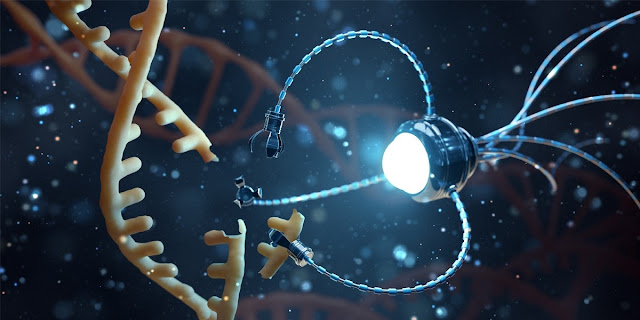Nanotechnology as a concept has been around for centuries, but it wasn't until the 1950s that the field began to take shape. In 1959, physicist Richard Feynman gave a seminal lecture at the California Institute of Technology, in which he discussed the possibility of manipulating and controlling individual atoms and molecules. This lecture, "There's Plenty of Room at the Bottom," is often cited as the birth of nanotechnology.

However, it wasn't until the development of new tools and techniques in the 1980s and 1990s that nanotechnology began to take off as a field of research. In 1981, the scanning tunneling microscope (STM) was invented, which made it possible to image and manipulate individual atoms on a surface. This opened up new possibilities for studying and working at the nanoscale level.
In the years that followed, researchers in fields such as physics, chemistry, and materials science began to explore the properties of materials at the nanoscale level and develop new tools and techniques for working with them. Today, nanotechnology is a rapidly growing field with a wide range of applications in science, engineering, and industry.

Nanotechnology is a field of science and engineering that involves the manipulation and control of matter at the nanoscale level, which is typically on the order of 1 to 100 nanometers. At this tiny scale, the physical, chemical, and biological properties of materials can be different from those of the same materials at larger scales.
Nanotechnology is a multidisciplinary field that draws on many different areas of science, including physics, chemistry, biology, and materials science. Researchers in nanotechnology work to design and create new materials, devices, and systems that can be used in a wide range of applications, including electronics, medicine, energy, and environmental science.
nanotechnology applications include:
Nanomaterials for energy applications: Researchers are exploring new materials at the nanoscale level for energy applications, such as battery storage, solar panels, and fuel cells. For example, nanowires made of silicon or other materials can be used to increase the efficiency of solar panels by absorbing more light.
Nanoparticle drug delivery: Nanoparticles are being developed as a way to deliver drugs more effectively to targeted areas of the body, such as cancer cells. Researchers are also exploring the use of nanoparticles to deliver gene therapy.
Nanoscale sensors: Nanotechnology is being used to create tiny sensors that can detect and measure various properties, such as temperature, pressure, and chemical composition. These sensors can be used in a wide range of applications, from environmental monitoring to medical diagnostics.
Nanomanufacturing: Advances in nanotechnology are making it possible to create new manufacturing techniques at the nanoscale level. These techniques can be used to produce new materials, devices, and systems with unique properties.

Environmental remediation: The use of nanoscale materials to clean up pollutants and contaminants in the environment such as soil, groundwater, sediment, or surface water
Nanoelectronics: Researchers are developing new nanoscale materials and devices for use in electronics, such as transistors and memory devices. These materials can be used to create smaller, faster, and more efficient electronics.
Nanomanufacturing: Advances in nanotechnology are making it possible to create new manufacturing techniques at the nanoscale level. These techniques can be used to produce new materials, devices, and systems with unique properties.

Environmental remediation: The use of nanoscale materials to clean up pollutants and contaminants in the environment such as soil, groundwater, sediment, or surface water
Conclusion:
Nanotechnology has the potential to revolutionize many fields and bring about significant advances in technology and science. However, it is also an area of ongoing research, and there are still many challenges and potential risks associated with the use of nanoscale materials and devices

.png)
.jpge.png)




